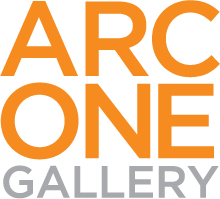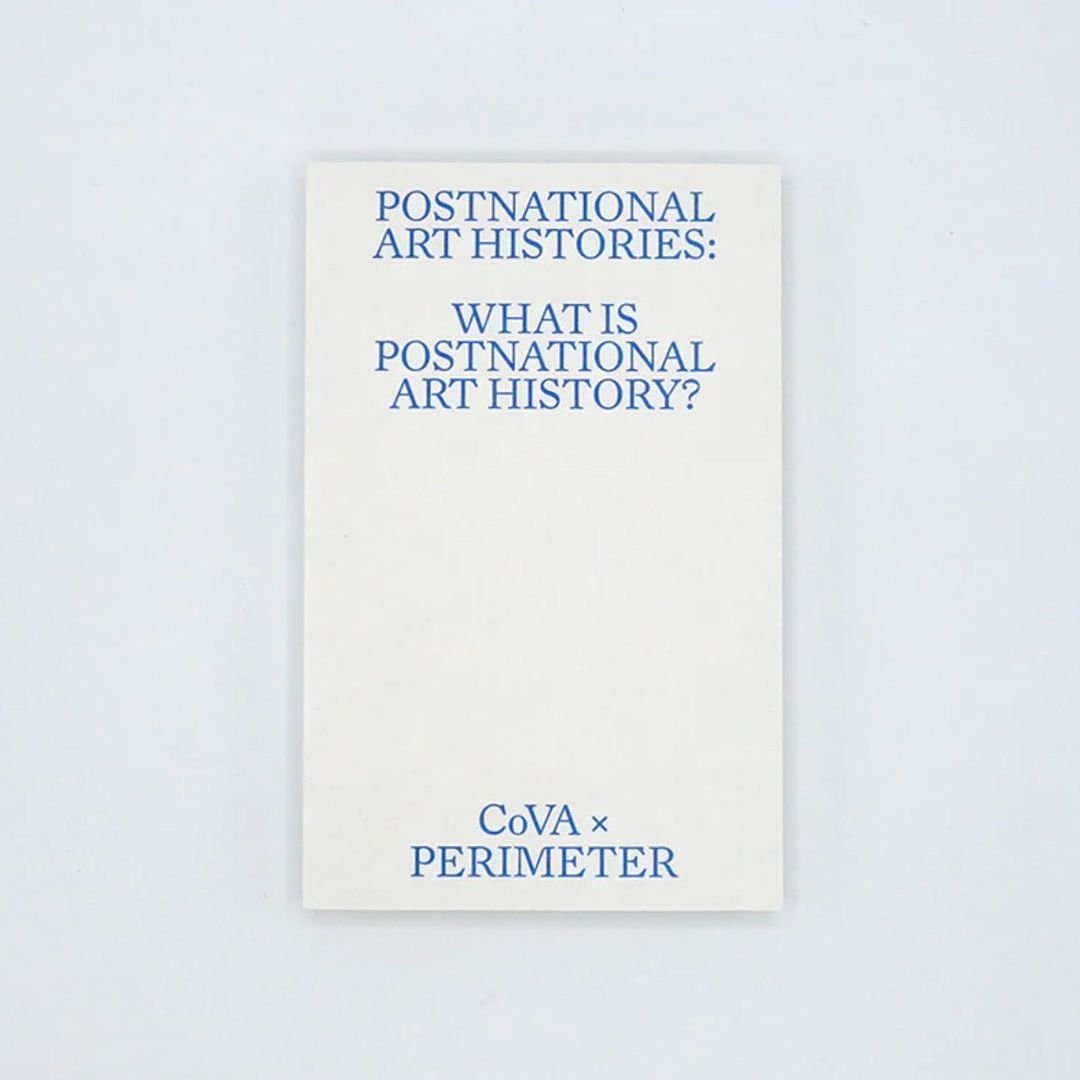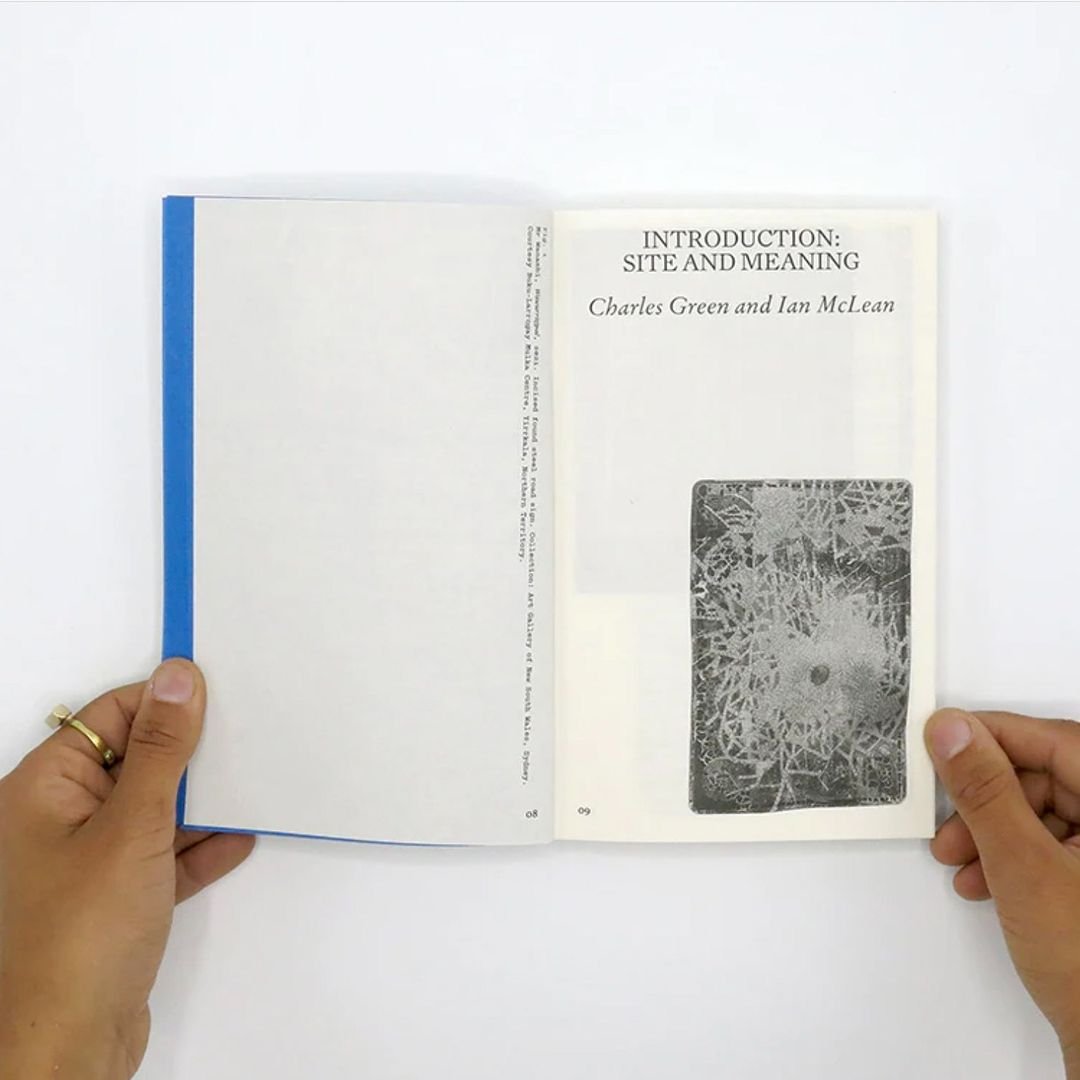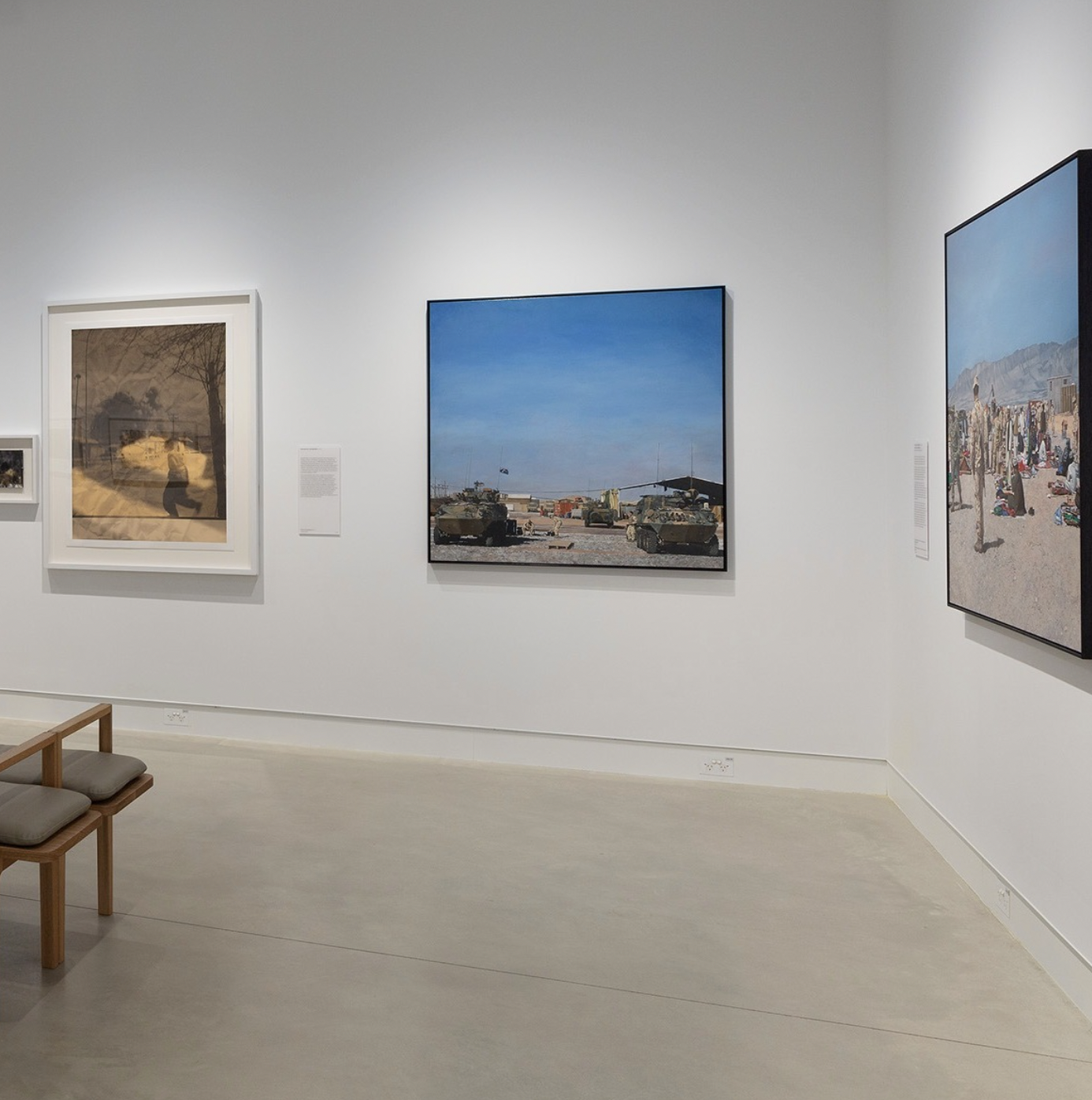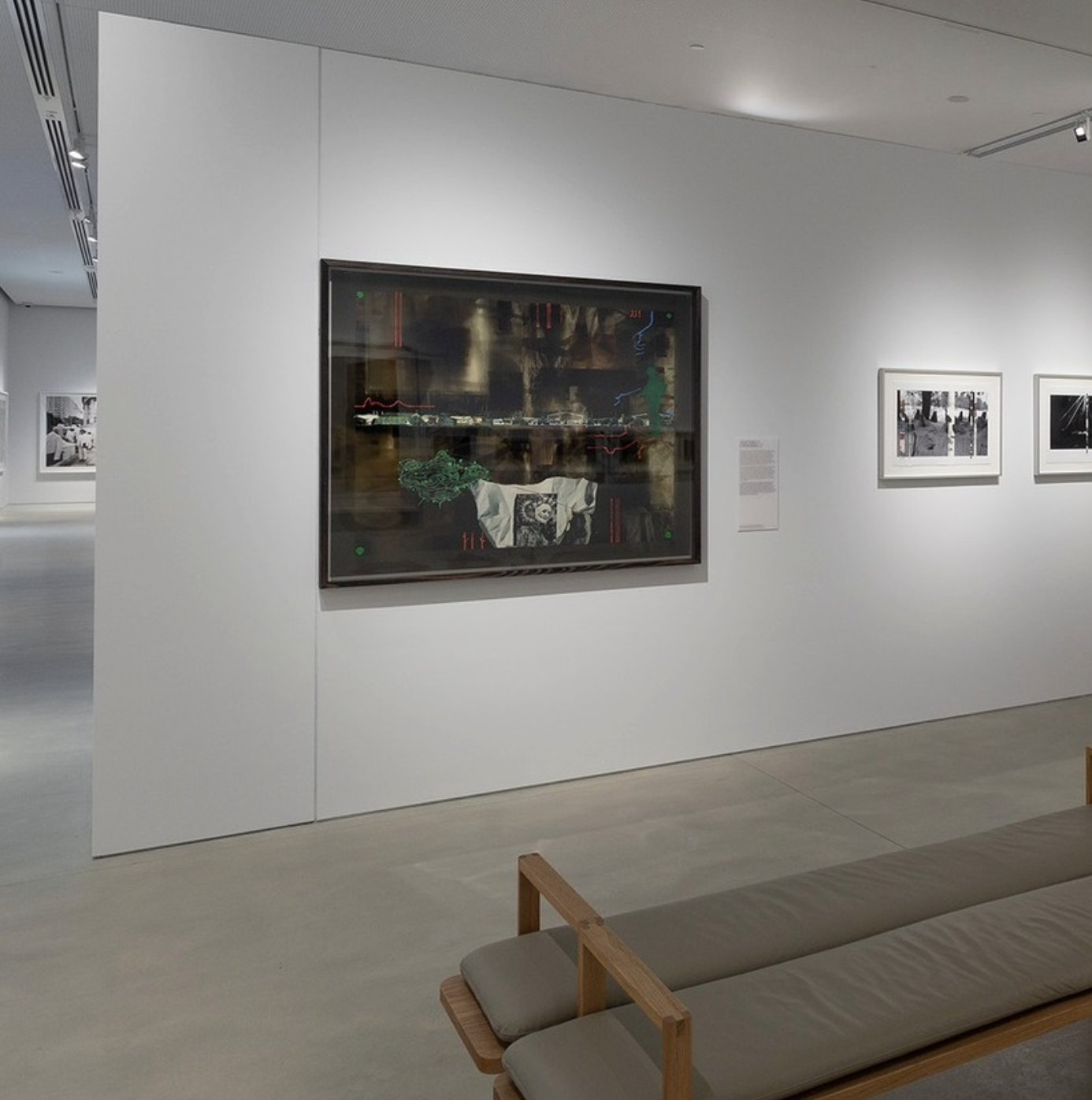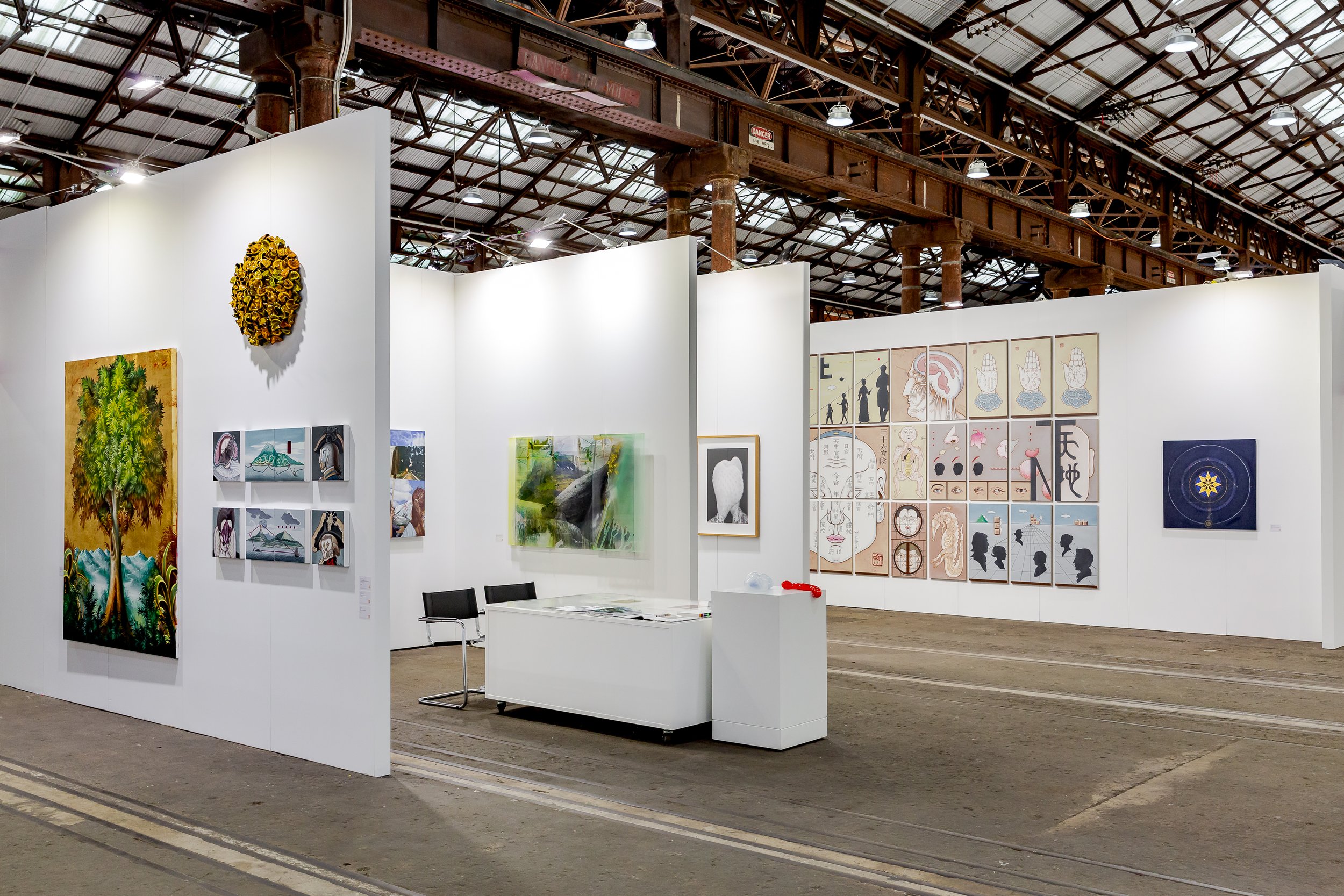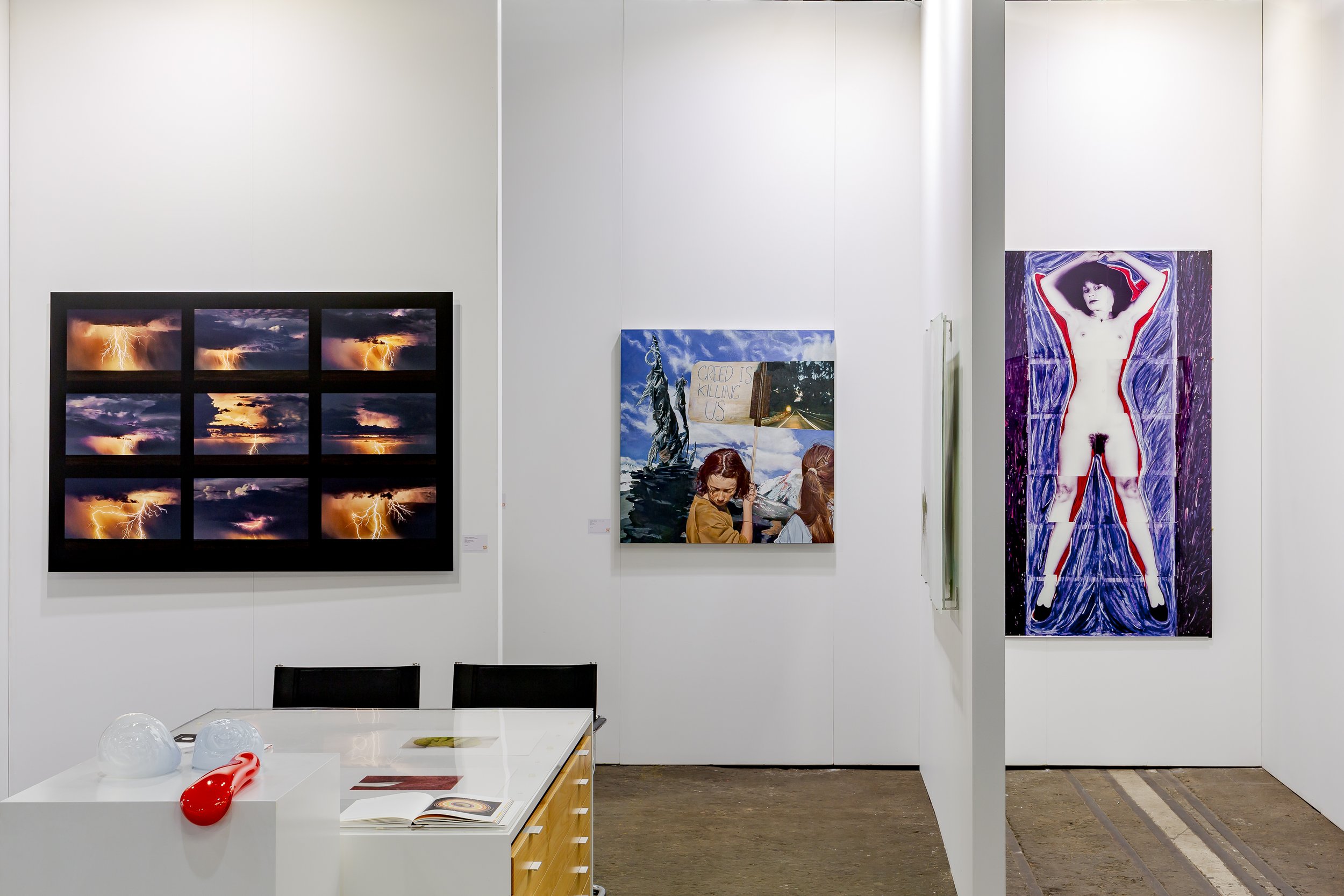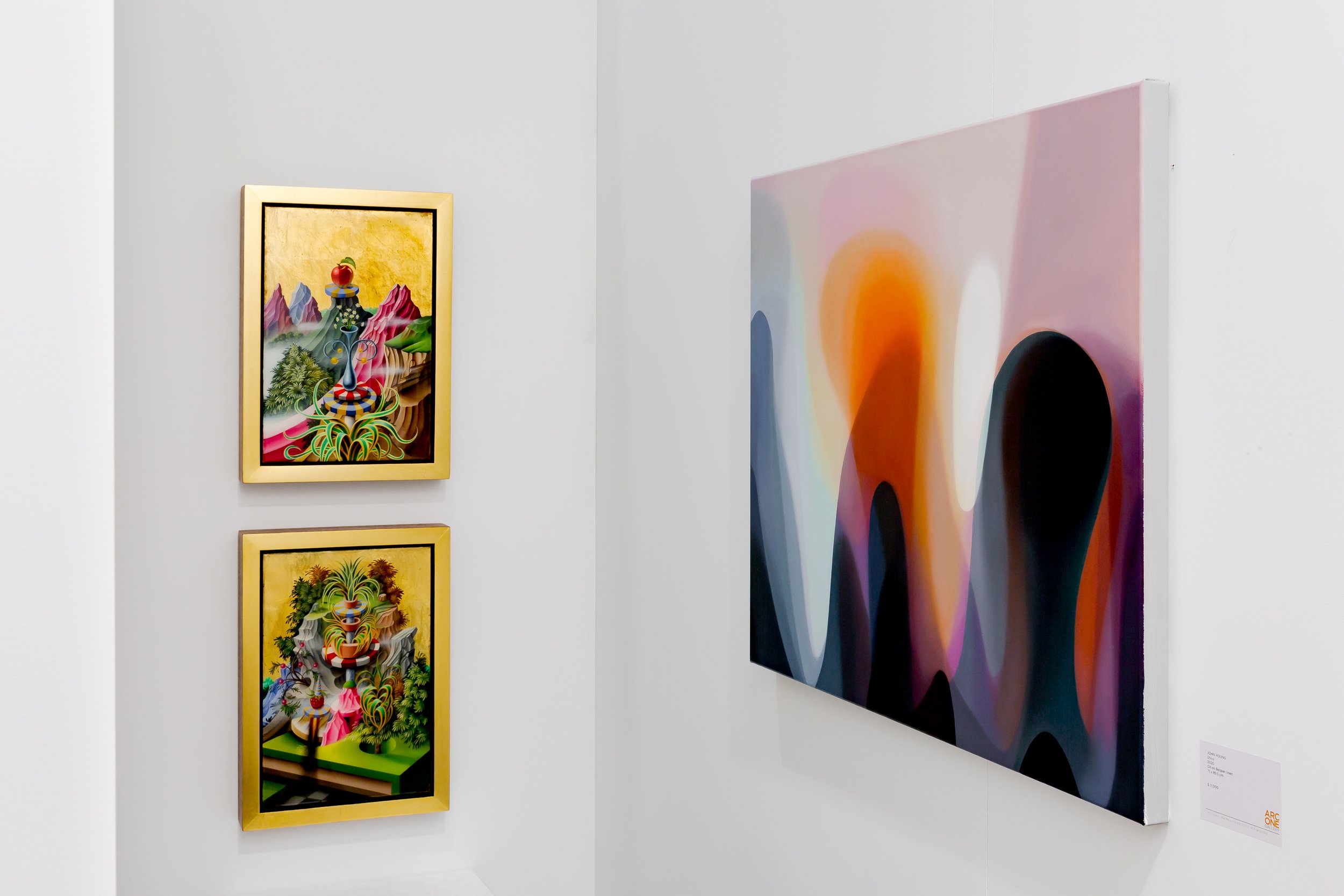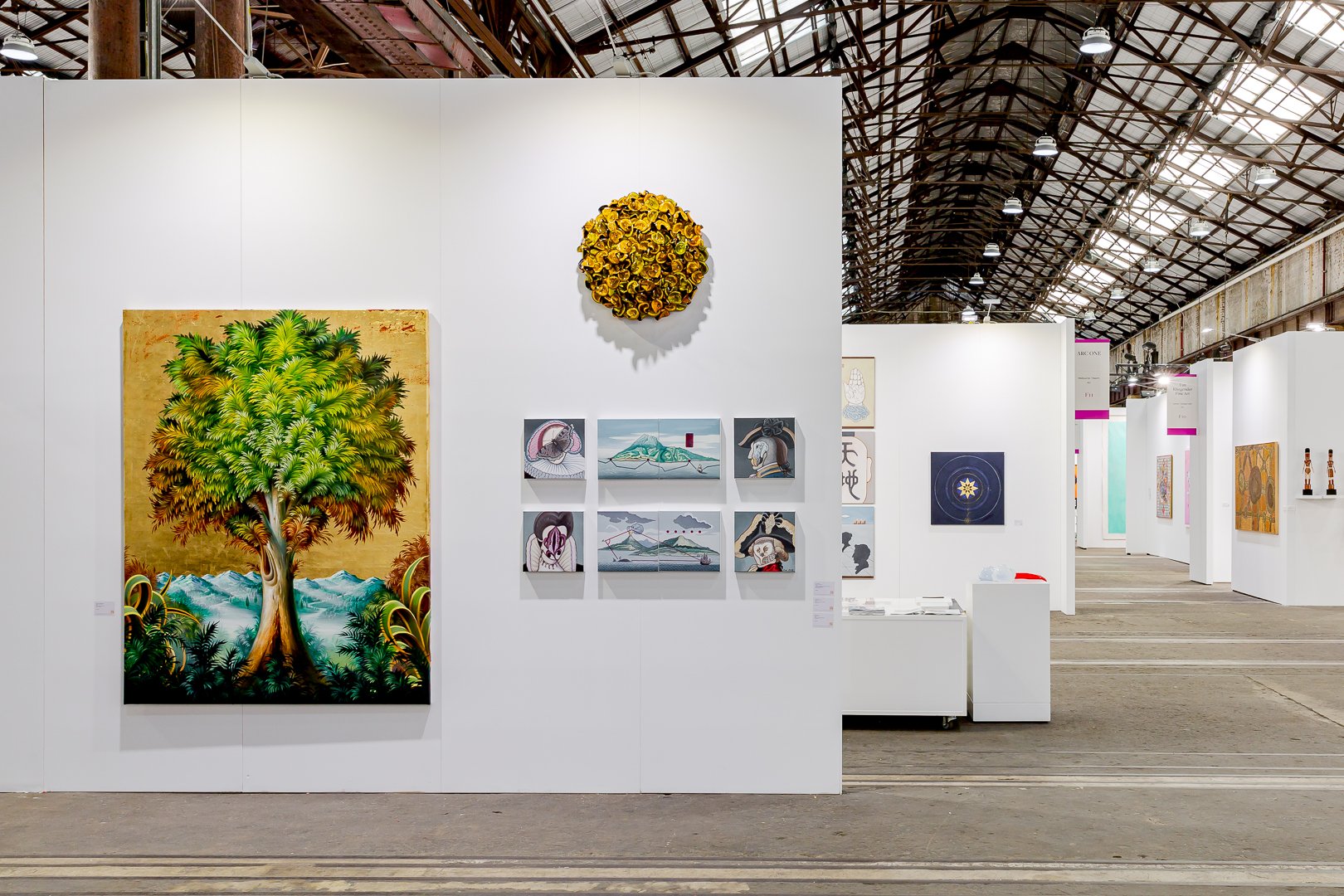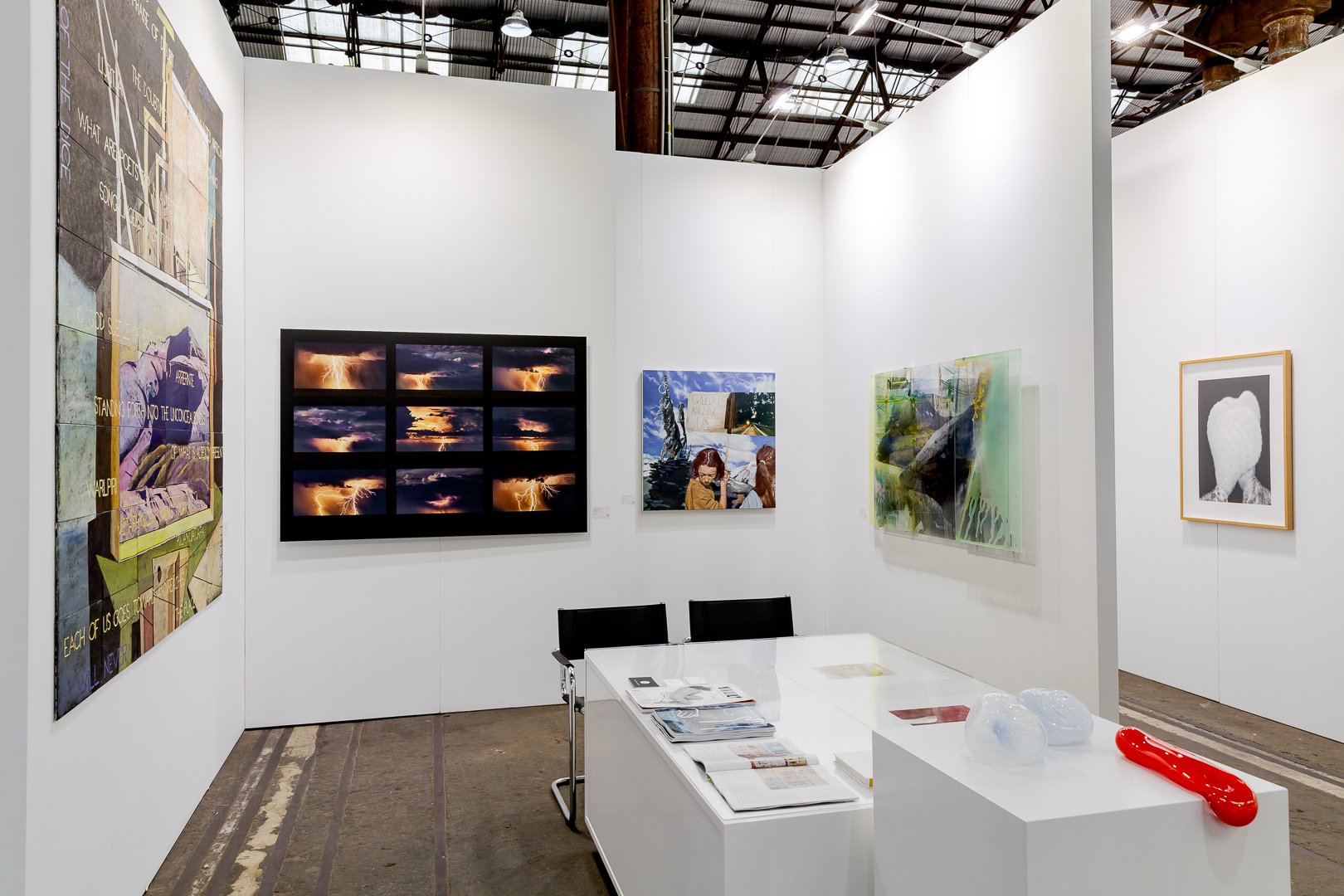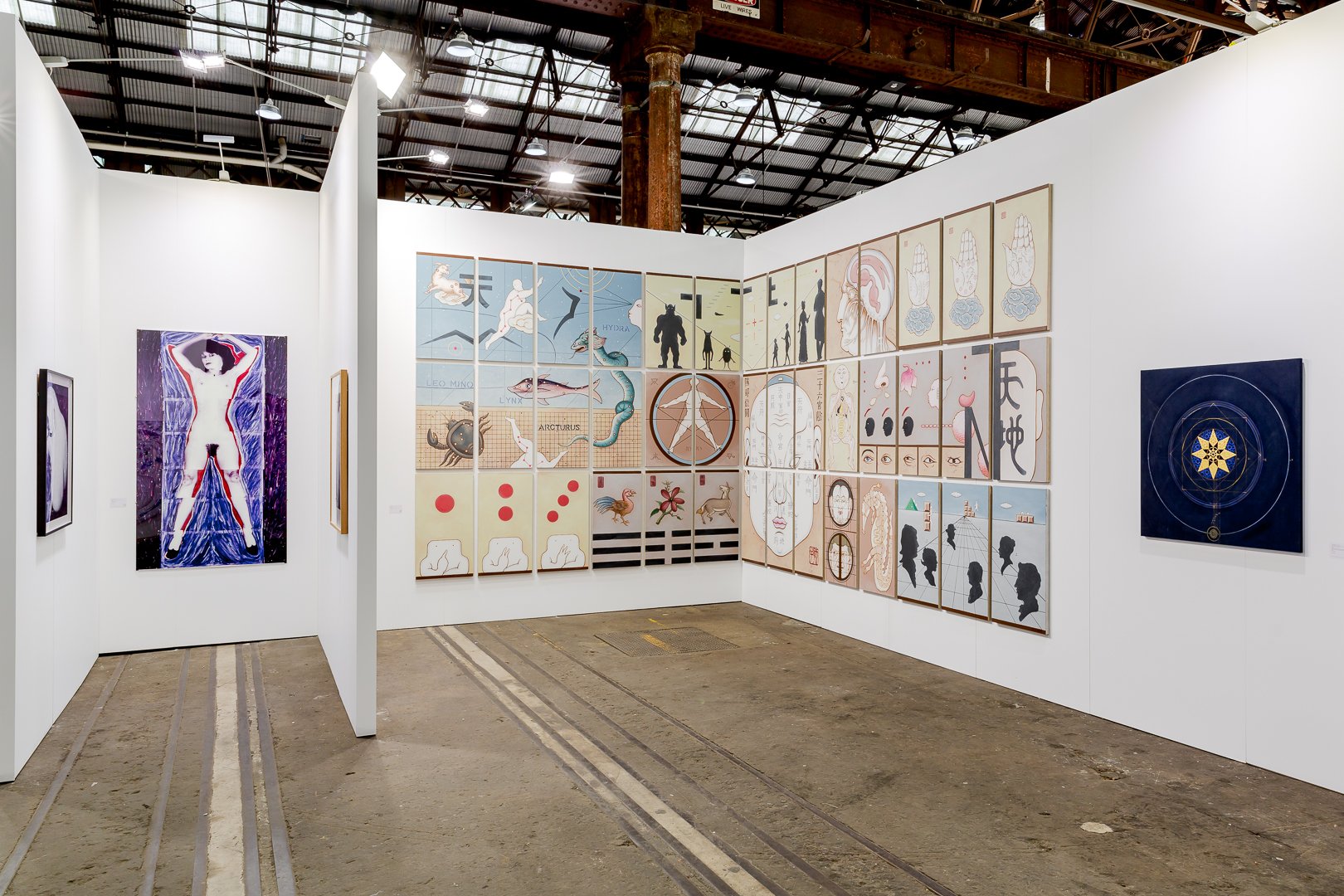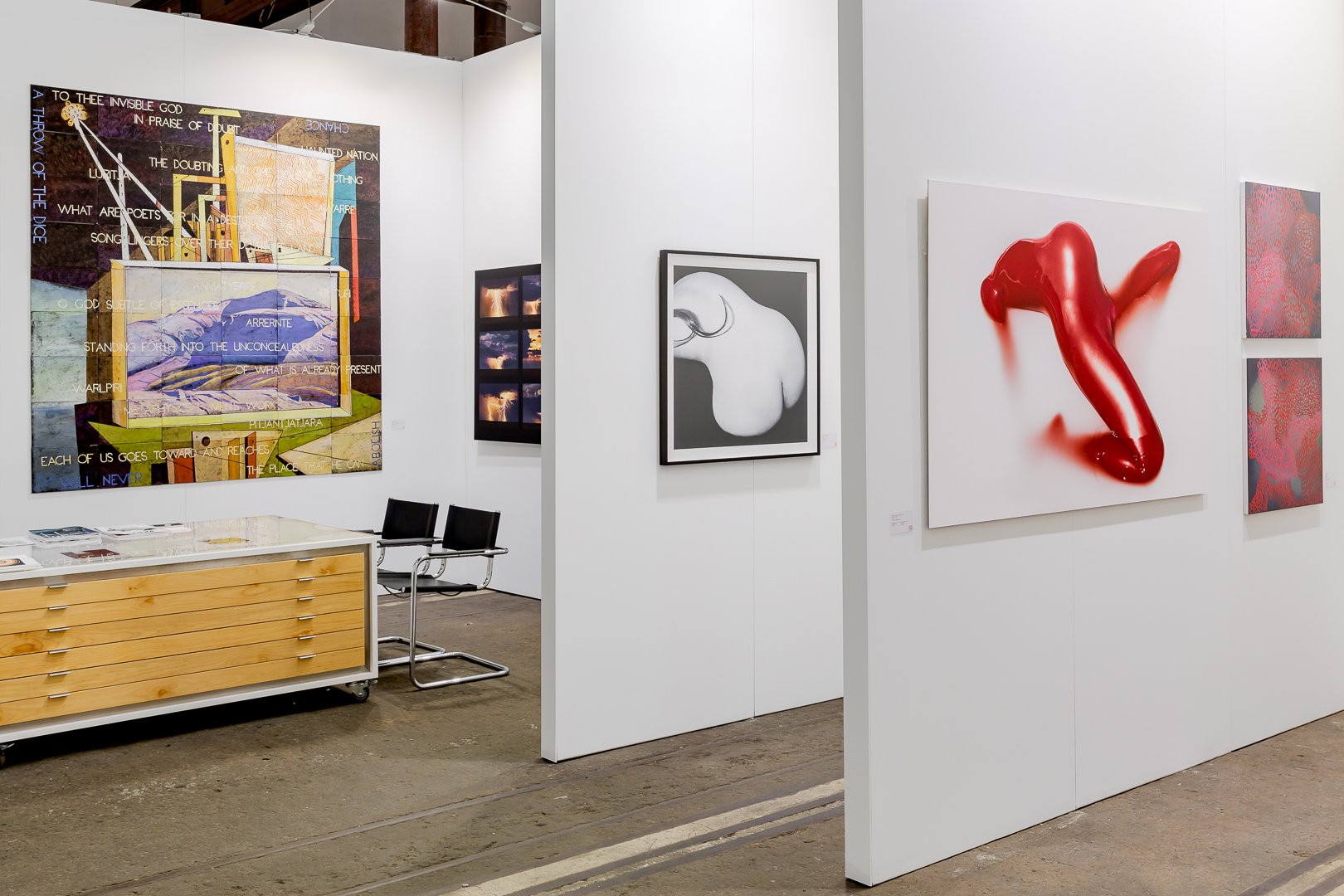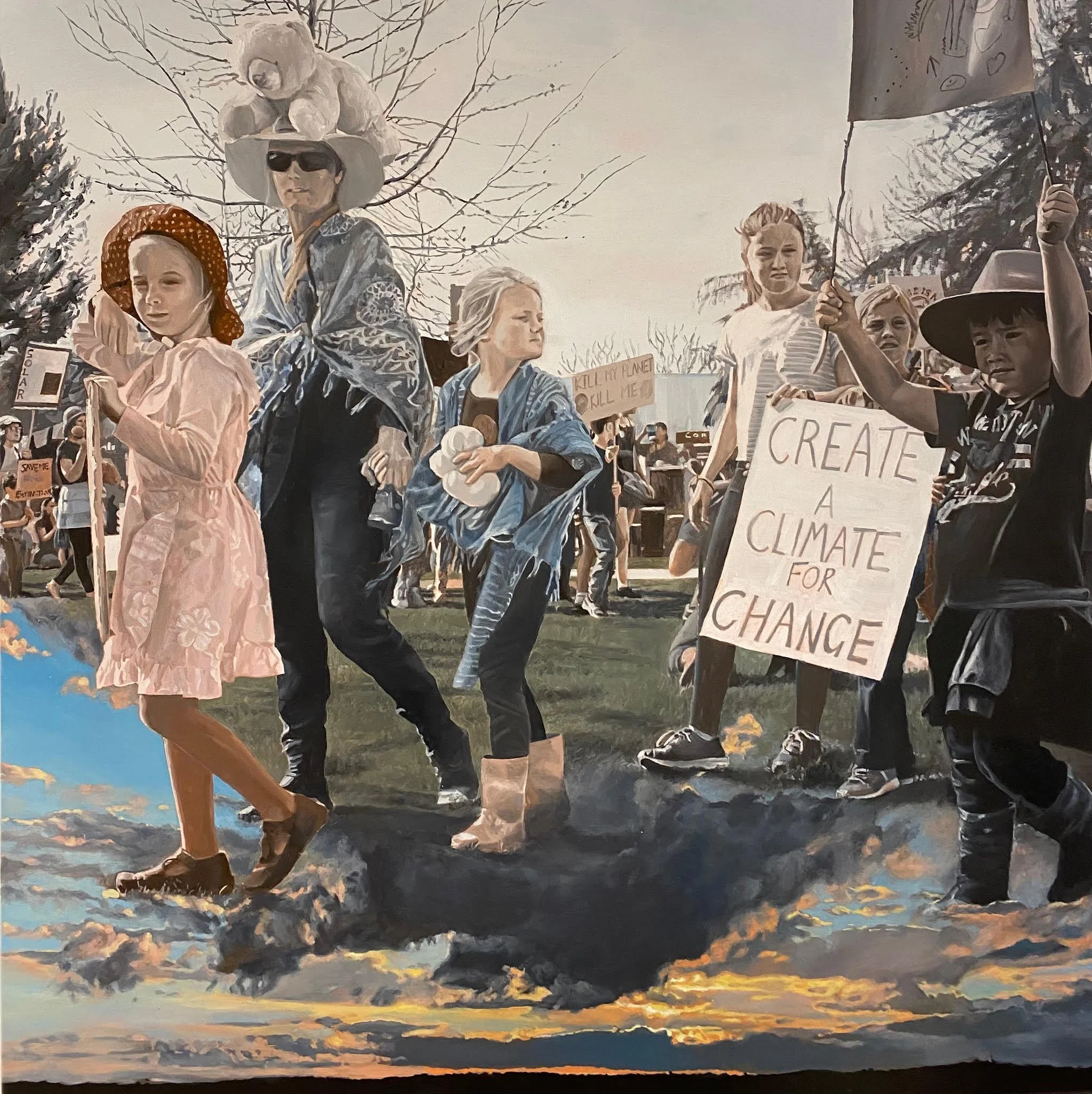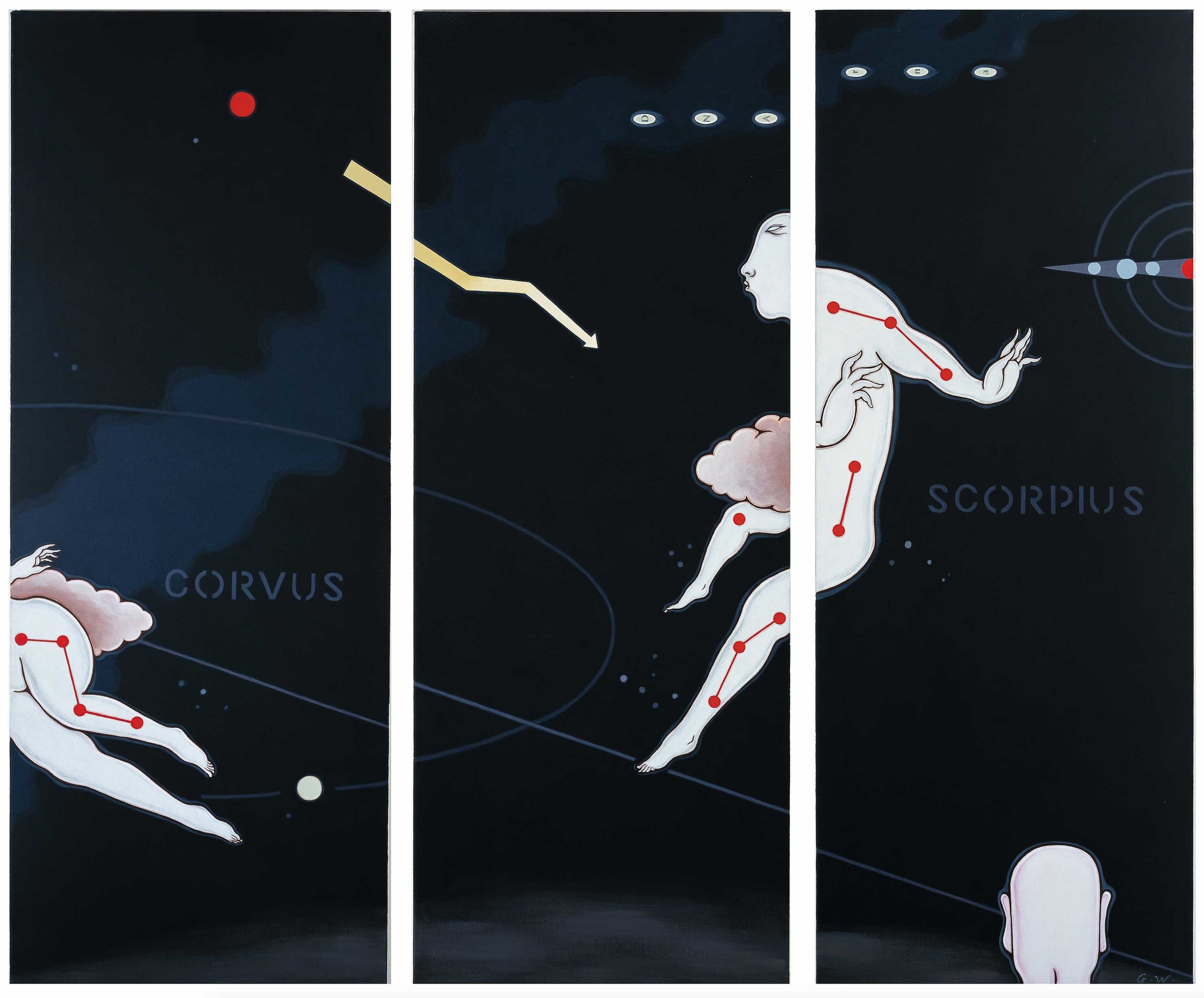Congratulations to Charles Green and his co-author Heather Barker, who have published a new book with Routledge on the history of Australian art from 1962 to 1988!
This book is a portrait of the period when modern art became contemporary art. It explores how and why writers and artists in Australia argued over the idea of a
distinctively Australian modern and then postmodern art. The book reflects on why the embrace of Aboriginal art was so late in art museums and in histories of Australian art, arguing that this was because it was not part of a national story dominated by colonial, then neo-colonial dependency.
"When Modern Became Contemporary Art begins with the excellent point that the study of art history has lagged behind artistic practice in contemplating Indigenous art. The book corrects that in the most welcoming way, by bringing hundreds—perhaps thousands—of points of reference, from anthropology, art history, journalism, curating, and the art market, into productive dialogue.”
-Professor James Elkins, E.C. Chadbourne Chair of Art History, Theory, and Criticism, School of the Art Institute of Chicago
'What is Postnational Art History?' edited by Charles Green and Ian McClean launched at Perimeter Books
Edited by Charles Green and Ian McLean, designed by Beaziyt Worcou, and conceived as part of a colloquium of art historians convened at the Buku-Larrngay Mulka Centre – the Yolgnu art centre in Yirrkala, situated in north-east Arnhem Land, in Australia’s Top End – this book aims to tease out and better understand the transnational resonances and connections between artists across cultures and borders that increasingly shape the emerging post-Western world.
During the past half-century, contemporary art practices, theories and criticism have engaged intently with notions of the postnational. Nonetheless, the presence of the nation-state and nationalisms in art history remain steadfast. In posing the question ‘What is postnational art history?’ this publication aims not for definitive answers, but rather to broach the broader concept of postnationalism and how it might function to disrupt, rethink and complicate established discourses around national art.
A collection of essays, reflections and conversations, this new book features contributions from ARC ONE Gallery artists CHARLES GREEN and DESMOND LAZARO, alongside authors including Anna Arabindah-Kesson, Rex Butler, Wulan Dirgantoro, A.D.S. Donaldson, James Elkins, Helen Hughes, Nicholas Jose, Susan Lowish, Carol Yinghua Lu, Margaret MacNamidhe, Ian McLean, Nina Miall, Nikos Papastergiadis, Nur Shkembi, Terry Smith, and Mr Wanambi.
CHARLES GREEN / LYNDELL BROWN feature in 'Art in Conflict' at the Perc Tucker Regional Gallery
ART IN CONFLICT
Lyndell Brown & Charles Green are featured in ART IN CONFLICT, which opens today at the Perc Tucker Regional Gallery, Townsville. These images are of last year's display at the Shepparton Art Museum. Be sure to catch this leg of the tour in Townsville!
This is a travelling exhibition organised by the Australian War Memorial. As curator Dr Anthea Gunn writes, "Contemporary artists’ responses to conflict bring to light untold stories, reveal neglected histories and deepen our understanding of Australia’s experience of conflict, both past and present."
Multiple works by Brown and Green are included in this display, highlighting their significant role as researchers in the Australian Research Council (ARC) Linkage Project that inspired the exhibition.
IMAGES: 'Art and Conflict' installation view, Perc Tucker Regional Gallery, Townsville, 2023. Courtesy of the Australian War Memorial. Slide two shows a collaborative work with @joncattapan
SYDNEY CONTEMPORARY 2022
Welcome to ARC ONE at SYDNEY CONTEMPORARY
From today will be showing a selection of major artworks from some of Australia's most significant contemporary practitioners, including PAT BRASSINGTON, LYNDELL BROWN / CHARLES GREEN, PETER DAVERINGTON, MURRAY FREDERICKS, JANET LAURENCE, HONEY LONG & PRUE STENT, DANI MARTI, JULIE RRAP, IMANTS TILLERS, GUAN WEI, CATHERINE WOO, and JOHN YOUNG. We are also proud to be presenting, for the first time, the work of internationally acclaimed artist DESMOND LAZARO.
Our booth is showcasing brand new artworks, alongside some of the most iconic works from ARC ONE Gallery, in celebration of these artists and their significant contribution to contemporary art in this country.
LYNDELL BROWN/CHARLES GREEN shortlisted for the Len Fox Painting Prize 2022
LYNDELL BROWN/CHARLES GREEN, 'Climate for Change', 2021, oil on linen, 100 x 100 cm.
Congratulations to LYNDELL BROWN/CHARLES GREEN on being shortlisted for the Len Fox Painting Prize 2022 with their work 'Climate for Change'.
The official exhibition opening of the shortlisted artists and announcement of winners will be held on Saturday 12 March. The exhibition will be held at Castlemaine Art Museum from Saturday 12 March 2022 to 13 June 2022.
The Len Fox Painting Award is a biennial acquisitive painting prize and is awarded to a living Australian artist to commemorate the life and work of Emanuel Phillips Fox (1865–1915), the uncle of Len Fox, partner of benefactor Mona Fox. The award is funded through a bequest from Mona Fox, with $50,000 awarded to the winner.
More info: https://www.castlemaineartmuseum.org.au/exhibitions/len-fox-painting-prize-2022
LYNDELL BROWN | CHARLES GREEN FINALISTS IN THE MORAN
Lyndell Brown & Charles Green, Portrait of Wukun Wanambi, 2021, oil on linen, 100 x 100cm
Congratulations to LYNDELL BROWN and CHARLES GREEN who are finalists in the 2021 Doug Moran National Portrait Prize with their portrait of Yirrkala elder and artist Wukun Wanambi.
’This portrait is of one of the most remarkable men we have ever met. In mid-2019 we travelled to Buku-Larrnggay Mulka, the Yolngu art centre at Yirrkala at the top of Australia’s Top End. Yirrkala is a small community, no more than a village, which serves as a hub for some 25 clan outstations of extended families or clans. As a living tradition, Yolngu culture has not turned its back on the incursions of the outside world but engaged with them. This is especially evident in Buku-Larrnggay Mulka, which is the vibrant art centre there, the nerve centre of the remarkable Yolngu campaign to impress their worldview upon the artworld in Australia and internationally. Taking its name from its location looking eastwards out over the ocean, Buku-Larrnggay means the feeling of the first rays of the sun on your face. Mulka means a sacred public ceremony that holds and protects knowledge. Our host—we were part of a 20-person conference of artists and academics that Charles had helped organise — was the well-travelled, charismatic Yolngu senior Elder and immensely distinguished artist Wukun Wanambi. An enthusiastic participant in our discussions throughout the week we spent there, he was keen to show us Yirrkala and introduce us to other Yolngu artists; he made us feel honoured guests despite his heavy cultural obligations and his own frail health. The portrait is a tribute to a remarkable man who impressed himself deeply upon us in our conversations with him and to whom we felt deeply grateful. While we were there we took a large number of photographs and made sketches from memory, including of Wukun. Afterward we sifted through all our memories and gradually abstracted from them the idea for this painting. When we realised the Moran Portrait Prize was to be held, it seemed to all instantly fit together, that we should show this image of a great Australian.’
– Lyndell Brown and Charles Green
The winner announced on 30 November. For more information, visit here >
CHARLES GREEN'S ESSAY IN VENICE BIENNALE PUBLICATION
Robert Owen, Split Gate, 1977, installation view from the 1978 Venice Biennale, ‘From Nature to Art, From Art to Nature’, marble, lead, aluminium, steel, Perspex, copper, electrical flex and fluorescent paint, 102 x 75 x 85cm.
CHARLES GREEN has written a brilliant essay in Kerry Gardner’s recently published book, Australia at the Venice Biennale: A Century of Contemporary Art. In his essay, Green writes on the return of three artists in 1978, two decades after Australia had withdrawn.
“By the time that Australia returned to Venice in 1978, Australian art had long become completely contemporaneous with American and European art and would remain so, with art just as innovative and significant as anywhere else. When Australia reappeared that year, it was represented by three immensely cosmopolitan, mid-career, white, male artists who refused to participate in the older tradition of Australian landscape painting of 1958. The idiosyncratic worldliness of each artist was quite a balancing act. Out of minimalism’s and conceptualism’s simple, serial structures, Ken Unsworth created an uncanny, theatrical mise-en-scene of absent bodies and dangerous suspension; ROBERT OWEN turned almost-identical geometric abstractions into luminous, metaphysical propositions; and JOHN DAVIS converted a bricolage of twigs from the bush near Mildura into five scattered, tower-like assemblages.”
Read an extract from Green’s essay here >
‘Australia at the Venice Biennale: A Century of Contemporary Art’ by Kerry Gardner is published by The Miegunyah Press.
VENICE BIENNALE BOOK FEATURES ARC ONE ARTISTS
Australia at the Venice Biennale: A Century of Contemporary Art by Kerry Gardner, hardcover 311mm x 251mm
Australia at the Venice Biennale: A Century of Contemporary Art is a new book by Kerry Gardner AM, published by MUP.
This splendidly produced book is the first comprehensive account of Australia’s history at the Venice Biennale, with an invaluable appendix that lists and illustrates many of this country's exhibits.
ARC ONE artists ROBERT OWEN & JOHN DAVIS are featured in the book, having both represented Australia at the pavilion in 1978, and CHARLES GREEN has contributed an exemplary essay among other significant Australian writers.
This richly illustrated publication illuminates the untold stories and origins of the most important event of the art world through one hundred years of Australian modern art.
Australia at the Venice Biennale is available to purchase online here >
LYNDELL BROWN & CHARLES GREEN AT CAM
LYDNELL BROWN & CHARLES GREEN have work showing at the Castlemaine Art Museum in their new exhibition Cloudy - a few isolated showers.
In this exhibition, clouds gather in the Whitchell Gallery with historical and contemporary painting, photography, sound, watercolour and sculpture, curated by Jenny Long.
Castlemaine-locals Charles and Lyndell present three new works made during 2020, over a period of uncertainty, crisis and the suspension of sociability and travel. The paintings depict Castlemaine clouds, the winds of change, and the wider world and its turbulence.
Cloudy - a few isolated showers continues at CAM until the end of the year.
Left to right: Lyndell Brown & Charles Green, Activism is Learning, 2020, oil on linen; Lyndell Brown & Charles Green, Orpheus, 2020, oil on linen; Lyndell Brown & Charles Green, Into the White Light, 2020, oil on linen.
BROWN & GREEN AWARDED 3 YEAR RESEARCH GRANT
Lyndell Brown and Charles Green have been awarded a 3-year Australian Research Council grant to collaborate with artist Jon Cattapan, Indigenous activist, film-maker, musician and playwright Richard Frankland, and eminent biomedicine researcher Gary Anderson.
“THE WAR AT HOME: ART DESCRIBES AUSTRALIA'S TURBULENT PRESENT”
This project investigates the friction between the nation’s stories of itself, and the current massive fracturing of health, of places and of peoples. Because Australia is changing beyond measure, it is appropriate to talk about the war at home. From World War 1 onwards, the Australian government decided that war artists be commissioned to make art about the nation at war. This project proposes that a team of Australian artists, with a deep experience of picturing conflict, investigates the current war at home, guided by a senior Gunditjimara elder and in collaboration with an eminent biomedical scientist.
CHARLES GREEN LECTURE ON WAR ART
Take an educational lunch break today at 1pm to hear CHARLES GREEN give a one-hour lecture on the subject Afterstorm: postnational story-telling and Australia’s wars.
Charles Green is Professor of Contemporary Art at the University of Melbourne in the Art History department. He will speak today about the distinction between War Art and war art: War Art, which emerged during World War 1, is art officially commissioned to commemorate a nation’s experience of war, often nationalist and self-congratulatory but also often soul-searching, for better or worse. This is a sub-set of the vaster field of war art. Made across the globe, it takes the experience of war as its subject, mostly not commissioned and often scathing about the artists’ own nations, sometimes with humanitarian intentions.
And so the argument that war art, not War Art, really requires transnational — or postnational — story-telling.
This event is hosted by the Australian Centre at University of Melbourne and will take place via Zoom.
More info and registration HERE.
Lyndell Brown & Charles Green, Turkey’, 2018, watercolour on rag paper, 81 x 97 cm (framed)
MGA 30 YEAR ANNIVERSARY CATALOGUE
'VIEW FINDING Monash Gallery of Art 1990—2020', designed by Pidgeon Ward.
The MGA recently launched a landmark 30 year anniversary publication - VIEW FINDING Monash Gallery of Art 1990—2020.
This fully illustrated catalogue features image plates by ARC ONE artists Pat Brassington, Lyndell Brown & Charles Green, Rose Farrell & George Parkin, Robert Owen, Jacky Redgate, Julie Rrap, Lydia Wegner and Anne Zahalka. It charts the history of the gallery, its present, and the future of photography in Australia.
Over the last 30 years MGA has developed one of Australia’s most important cultural assets — the only public collection solely dedicated to Australian photography. MGA’s artistic program has explored the diversity of photographic practice in Australia, and has placed Australian photographers and photography within a global context. 'View Finding' looks at the past, present and future of photography in Australia, presenting moments that have defined MGA, its collection and exhibition history.
A selection of leading lights who specialise in photography in Australia have contributed essays to the publication. You can purchase it here.
LYNDELL BROWN & CHARLES GREEN SIGN OPEN LETTER ON WORLD REFUGEE DAY
Today, on World Refugee Day, Australia’s Official War Artists have come out in condemnation of the punitive treatment of a fellow artist held in detention.
LYNDELL BROWN & CHARLES GREEN are signatories on an open letter published today in support of Farhad Bandesh, a refugee whose art has helped him survive 7 years of imprisonment and whose materials are now being arbitrarily withheld.
“The scary intensity we felt in active war zones in Iraq and Afghanistan intensified our profound empathy for all those who flee their homes in times of conflict,” said Brown and Green. “Refugees deserve to be given a chance.”
The letter, published via @nava_visualarts, asks “Why withhold art materials? They are not illegal or unsafe. The threat lies, instead, in the ability of art to challenge injustice, the power of a free voice in an unfree system…A paintbrush can be a lifeline for a prisoner.”
Inset painting detail from Lyndell Brown & Charles Green’s work The Far Country (2019) showing refugees fleeing across the high Kurdish mountains.
LYNDELL BROWN & CHARLES GREEN
Charles Green & Lyndell Brown with one of their works on display in Civilization: The Way We Live Now at NGV Australia.
LYNDELL BROWN & CHARLES GREEN are featured in the latest edition of NGV magazine. In an edited transcript of a conversation that took place in April this year, Charles & Lyndell discuss the role of artists on war missions and their experiences in wartime.
LB: Our works are what you could call ‘slow art’. They are often finely worked, detailed realist paintings, and they take us a long time to do in the studio. We weren’t keen on the idea of working like that in difficult situations. We were in the desert conditions of Iraq and Afghanistan.
CG: We were possibly the first Australian official war artists to resist the idea of painting and drawing on the spot. It’s an immensely complicated process to get artists into those zones and a place where they can work. We. told them we could go in with cameras
LYNDELL BROWN / CHARLES GREEN
The Far Country, installation view ARC ONE Gallery, 2019. Photo: Andrew Curtis.
ARC ONE Gallery is delighted to present The Far Country, a major exhibition by Australia’s foremost artist collaboration, Lyndell Brown & Charles Green. An opening reception will be held on Wednesday 9 October, 6-8pm.
Lyndell Brown and Charles Green’s extensive practice has long been informed by the nature of memory and an investigation of how events intersect with the legacy of the past and with art history to inform our experience of identity, place and landscape. In their latest exhibition at ARC ONE, The Far Country, the artists speak to the contemporary condition of turbulence by mapping images across continents and centuries. Drawing on psychedelic anthropologist Carlos Castaneda’s book, The Eagle’s Gift (1981), which turned the depiction of a shaman’s mentorship into the superimposed juxtaposition of networked times, spaces and narratives, this exhibition explores the ways in which memory attracts pathos and how single images derive from the virtual recollection of a panorama of events unfolding in time. Narrative is a decoy.
The Far Country, 2019, Oil on Transparent Digital Print on Duraclear Film on Perspex, 200 x 143 cm. Photo: Andrew Curtis.
In these fifteen new works, images from different contexts and timeframes—sourced from the artists’ encounters with museums and research centres, from books, journals, postcards, electronic media, as well as their own personal travel photographs and family archives—are exquisitely re-created, layered, and collaged to form new, woven realities that trigger new memories and old meanings. References ranging from Gerhard Richter’s painting of 9/11, a pair of now vanishing Gouldian Finches, a ship carrying young Australian soldiers to war in 1941, a snapshot taken by Green’s father during the bombing of Darwin in 1941, refugees fleeing across high Kurdish mountains, and a photograph taken by the artists in 2014 at Santa Cruz cemetery in Dili, Timor-Leste, recording the site of a massacre, all float in meticulously painted, superimposed trompe l’oeil. Deliberately difficult to read as narrative, this flow of information and images presents us with the beauty of the physical world and human forces that collide against it. The artists’ personal memories are juxtaposed with contemporary and historical images of conscience and humanitarianism, exploring the way in which our experience frays alongside collective memory. In The Far Country, Brown and Green, create new resonances between spaces, times, histories and memory. They note that to move forward, we must constantly concentrate on peripheral vision, but then we may turn into phantoms, become invisible and fly across shimmering spaces and times.
The Black Range, 2019, Oil on linen, 155 x 155 cm.
Lyndell Brown and Charles Green have worked as a collaborative team since 1989. Since then, all their art has always been made together. Working across mixed media on paper, oils, photography and overpainted photographs, they have held more than 40 solo exhibitions and have been included in more than 50 curated exhibitions. In 2007, they were Australia’s Official War Artists, deployed to Afghanistan and Iraq, and between 2011 and 2019 worked on a follow-up project in collaboration with artist Jon Cattapan (assisted by two Australian Research Council Discovery Grants) about the aftermath of Australia’s wars since Vietnam, which the three artists exhibited in Melbourne across two galleries in late 2014, accompanied by a book (Framing Conflict: Contemporary War and Aftermath, Macmillan, 2014). In 2017 Brown and Green were commissioned to design a major tapestry, Morning Star, woven by the Australian Tapestry Workshop, to celebrate the opening of the Sir John Monash Centre at Villers-Bretonneaux, France. Brown’s and Green’s art has been extensively written on. Their works have been included in a number of museum surveys and are in the collections of most of Australia’s public art collections and institutions, including the National Gallery of Australia, the National Gallery of Victoria, the Art Gallery of New South Wales, the Australian War Memorial, as well as in many major private collections in Australia and overseas. Charles Green is Professor of Contemporary Art at the University of Melbourne and Lyndell Green is a Research Fellow at the University of Melbourne. They are based in regional Victoria and walk that country every day. This exhibition is supported by the University of Melbourne and the Australian Research Council. The artists acknowledge their masterprinter, Chris Pennings, at Fini Frames.
LYNDELL BROWN & CHARLES GREEN
LYNDELL BROWN & CHARLES GREEN, along with fellow artists Paul Gough and Jon Cattapan, have put together an exhibition at Domain House in the Botanic Gardens. Turbulence, Conflict and the Garden of Remediation explores the ways in which gardens and plants have unexpected relationships with times of turbulence.
Gardens have offered refuge as places of rehabilitation and healing. The plants growing within have figured as talismans of home, as medicines and now, as harbingers of conflict-driven climate change.
The exhibition opens today and continues until 3rd November.
The artists have also curated a symposium featuring presentations and panel discussions on the place of gardens within the movements of humans caught in turbulent flows. This is a free event happening across 25th & 26th October. Register here.
Lyndell Brown & Charles Green with Jon Cattapan, Afterstorm 2 & Afterstorm 1, 2019, oil and acrylic on digital print on canvas, 175 x 240 cm, courtesy of ARC ONE and Station Gallery.
LYNDELL BROWN & CHARLES GREEN | ANNE ZAHALKA
Civilization: The Way We Live Now is an international photography exhibition of monumental scale, featuring the work of 100 of the world's finest photographers. LYNDELL BROWN & CHARLES GREEN and ANNE ZAHALKA are included in this significant exhibition.
Having shown at the major institutions MMCA in Seoul and UCCA in Beijing, Civilization has now landed at the NGV until 2 February 2020.
In this increasingly globalised world, the exhibition explores photographers’ representations of life in cities and presents a journey through the shared aspects of life in the urban environment. The selected works create a picture of collective life around the world and document patterns of mass behaviour. The exhibition looks at the phenomenal complexity of life in the twenty-first century and reflects on the ways in which photographers have documented, and held a mirror up, to the world around us.
LYNDELL BROWN & CHARLES GREEN | MURRAY FREDERICKS | ROBERT OWEN | SAM SHMITH
Lyndell Brown & Charles Green, 'Transmigration', 2007, oil on linen, 152 x 152 cm.
Four ARC ONE artists, LYNDELL BROWN & CHARLES GREEN, MURRAY FREDERICKS, ROBERT OWEN and SAM SHMITH, are featured in the new issue of Vogue Living.
Click here for a full tour of the private residence they hang in.
LYNDELL BROWN & CHARLES GREEN | GUAN WEI
Guan Wei, Gazing Into Deep Space #9, 2000, acrylic on canvas, 127 x 159 cm (triptych).
LYNDELL BROWN & CHARLES GREEN and GUAN WEI are featured in Between the Moon and the Stars at the Museum And Art Gallery Northern Territory.
Between the Moon and the Stars explores how the moon and its phases continue to impact on animal and human life. The exhibition includes ancient Aboriginal astronomical knowledge, dreaming stories and the history of stargazing in Australia.
Lyndell Brown & Charles Green, Wild Nights, 2005, lightjet print on duraclear film, 104 x 107 cm.
The exhibition continues until 29 March 2020.
LYNDELL BROWN & CHARLES GREEN
LYNDELL BROWN & CHARLES GREEN'S powerful panoramic photographic installation, 100 Years of Turbulence, 1918 - 2018, opens today at 4pm at the Castlemaine Art Museum as part of the Castlemaine State Festival.
The artists have constructed an immense visual countdown of images of turbulence, war, and aftermath from 1918 to 2018. The work is also an atlas of conflict, linking cause and effect from one conflict to another, composed of fragmentary parts in a panorama; a disjointed countdown of personal events and public disaster over the last 100 years, shared, persisting, haunted photos, sometimes over-painted, entwined with layers of meaning and political disputation. They overlay images of conflict and war with images of exactly the same places, now, in times of relative peace or continued conflict. The result shows the past reaching towards the present and the present towards the past: the countdown joins 1918 to 2018 in chains of causation and similarity.
100 Years of Turbulence, 1918 - 2018 will be on display until March 31.
Lyndell Brown & Charles Green, '100 Years of Turbulence, 1918 - 2018' (Detail), 2018, inkjet print on rag paper, 4 parts, each 120 x 360 cm.
